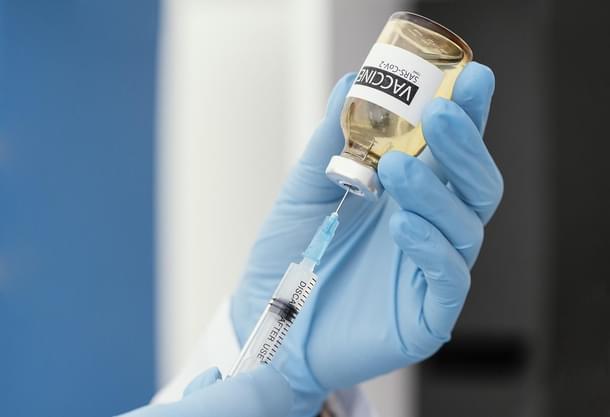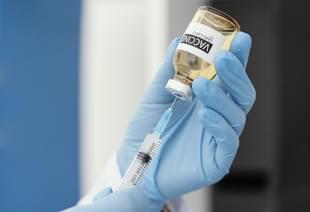Insta
India Liberalises Covid-19 Vaccination: All Aged Above 18 To Be Eligible For Inoculation From 1 May
Swarajya Staff
Apr 19, 2021, 07:32 PM | Updated 07:57 PM IST
Save & read from anywhere!
Bookmark stories for easy access on any device or the Swarajya app.


Everyone above the age of 18 will be eligible to get the Covid-19 vaccination from 1 May. A decision to this tune was taken during a meeting chaired by Prime Minister Narendra Modi today (19 April).
India’s National Covid-19 Vaccination Strategy has been built on a systematic and strategic end-to-end approach, proactively building capacity across R&D, Manufacturing and Administration since April 2020.
India has been following a dynamic mapping model based on availability of vaccines and coverage of vulnerable priority groups to take decisions of when to open up vaccinations to other age-groups. A good amount of coverage of vulnerable groups is expected by 30 April.
Phase-I of the National Covid-19 Vaccination Strategy was launched on 16 January for Health Care Workers and Front Line Workers. As systems and processes stabilised, Phase-II was initiated from 1 March, focusing on all people above 45 years of age, accounting for more than 80 per cent Covid mortality in the country.
In its Phase-III, the National Vaccine Strategy aims at liberalised vaccine pricing and scaling up of vaccine coverage. This would augment vaccine production as well as availability, incentivising vaccine manufacturers to rapidly ramp up their production as well as attract new vaccine manufacturers, domestic and international.
It would also make pricing, procurement, eligibility and administration of vaccines open and flexible, allowing all stakeholders the flexibility to customise to local needs and dynamics.
The main elements of the Liberalised and Accelerated Phase 3 Strategy of the National Covid-19 Vaccination program that would come in effect from 1 May, are as follows:
- Vaccine manufacturers would supply 50 per cent of their monthly Central Drugs Laboratory (CDL) released doses to the centres and would be free to supply the remaining 50 per cent doses to states and in the open market
- Manufacturers would transparently make an advance declaration of the price for 50 per cent supply that would be available to states and in open market, before 1 May. Based on this price, State governments, private hospitals, industrial establishments etc would be able to procure vaccine doses from the manufacturers. Private Hospitals would have to procure their supplies of Covid-19 vaccine exclusively from the 50 per cent supply earmarked for other than government of India channel. Private Vaccination providers shall transparently declare their self-set vaccination price. The eligibility through this channel would be opened up to all adults, i.e. everyone above the age of 18
- Vaccination shall continue as before in Govt. of India vaccination centres, provided free of cost to the eligible population as defined earlier
- All vaccination would be part of the National Vaccination Programme, and mandated to follow all protocol such as being captured on CoWIN platform, linked to AEFI reporting and all other prescribed norms. Stocks and price per vaccination applicable in all vaccination centres will also have to be reported real-time.
- The division of vaccine supply 50 per cent to government of India and 50 per cent to other than government of India channel would be applicable uniformly across for all vaccines manufactured in the country. However Government of India will allow the imported fully ready to use vaccines to be entirely utilised in the other than government of India channel.
- Government of India, from its share, will allocate vaccines to States/UTs based on the criteria of extent of infection (number of active Covid cases) and performance (speed of administration). Wastage of vaccine will also be considered in this criteria and will affect the criteria negatively. Based on the above criteria, State-wise quota would be decided and communicated to the States adequately in advance.
- Second dose of all existing priority groups, wherever it has become due, would be given priority, for which a specific and focused strategy would be communicated to all stakeholders.





